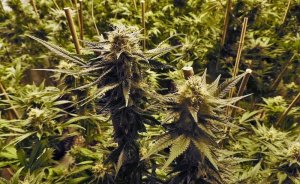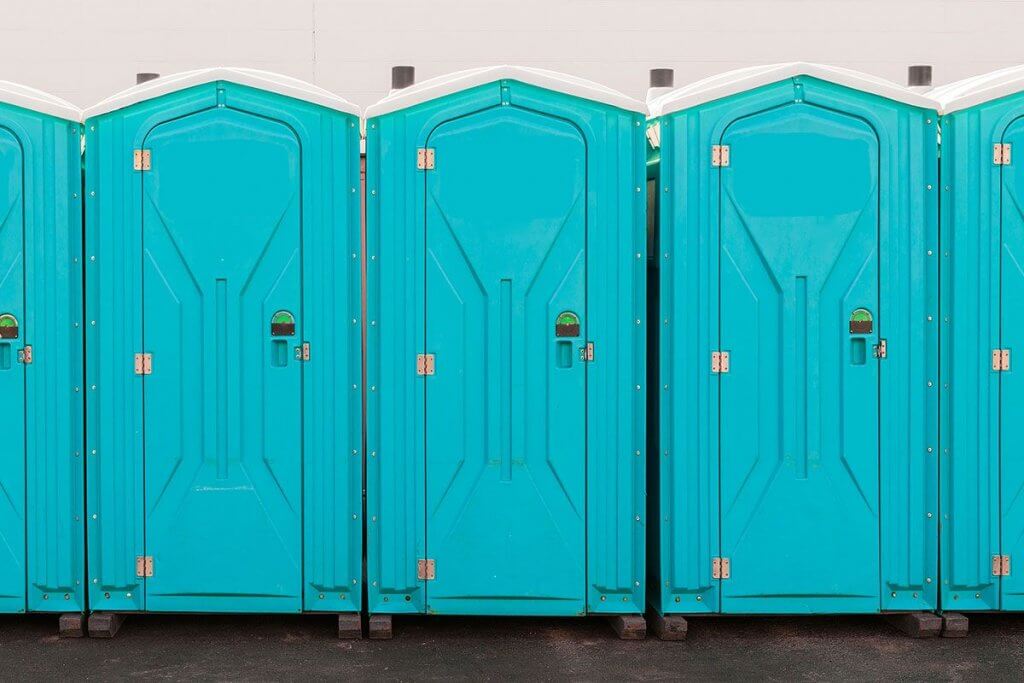
Cannabis Odor Control Systems for Grow Rooms & Dispensaries
With the legalization of marijuana use and pot farming across more and more states throughout the United States and other countries, cannabis companies are increasingly being threatened with “neighborhood complaints” and lawsuits over the sweet, skunk-like odors that inevitably waft about the surrounding areas of pot-growing greenhouse facilities, cannabis grow rooms, dispensaries and other environments that cultivate or sell pot.
At Surco, we are no stranger to solving stinky problems that cause neighborhood friction and complaints. After all, the waste that gets deposited into portable toilets is by far and away a much more smelly situation than weed. In fact, our products have been used the world over by business owners for well over 70 years to ameliorate odors across an endless array of industries.
With the proliferation of medicinal and other forms of cannabis commerce, our teams have taken our decades of molecular vaporous odor control expertise and engineered a series of our products which provide those in the cannabis industry with one of the most advanced, high tech solutions for preventing cannabis odors from escaping the interiors and exteriors of your grow rooms, dispensaries and greenhouse facilities.
A Quick Dive Into Pot And Medicinal Cannabis
In recent years, the therapeutic use of medicinal cannabis, or medicinal marijuana has garnered much national attention. The term, medical marijuana, refers to treating symptoms of illness and other conditions with the whole, unprocessed marijuana plant or its basic extracts. Its use and acceptance continues to evolve, as indicated by the growing number of states now permitting use for specific medical indications.

Little by little, people are starting to learn that there are multiple varieties of the cannabis plant, sometimes called “marijuana”, and they can be prepared in a variety of ways. The potency of cannabis can vary greatly from one plant to another and from one preparation to another.
Cannabis Has Two Subspecies
According to a study concerning marijuana’s colorful history conducted by Barney Warf, a professor of geography at the University of Kansas in Lawrence, it is important to distinguish between the two familiar subspecies of the cannabis plants. Cannabis sativa has been used all over the globe medically, recreationally and spiritually for thousands of years.
It contains the chemical compound THC (delta-9 tetrahydrocannabinol), which is believed to be responsible for most of the characteristic psychoactive effects of cannabis that leads to the “high” that is experienced when cannabis is consumed. The dried leaves and flowers (buds) of the cannabis plant are known as marijuana.
Cannabis sativa L., which was so named to honor the botanist, Carl Linnaeus, is known as hemp. This subspecies does not contain the psychoactive aspects of its cousin and is primarily used in manufacturing products such as oil, cloth and fuel.
Whether cannabis indica, which was identified by the French naturalist, Jean-Baptiste Lamarck and Cannabis sativa are truly separate species is a matter of debate. The Cannabis indica plant is cultivated for many purposes; for example, the plant fibers can be converted into cloth.
Not only do these species look different, their smells are diverse as well. Indica strains are characterized by strong odors, many of which are similar in smell to a skunk. Sativa types, however, have sweet and spicy odors.

A Quick History of Medicinal Cannabis
The origins of cannabis date back more than 12,000 years ago on the steppes of Central Asia, specifically in locations that are now Mongolia and southern Siberia. Traces of the drug (burned cannabis seeds) were found where prehistoric hunters and gatherers lived, in burial grounds in some tombs of ancient Chinese nobility and in the remains of Viking ships dating back to the ninth century.
The earliest known written record on the use of cannabis dates back to 2727 BC to the reign of the Chinese Emperor, Shen Nung. The ancient Greek and Roman cultures were familiar with marijuana, and its use quickly spread from the Middle East throughout the Islamic empire to North Africa.
In the 16th century, cannabis spread to the western hemisphere where the rulers of Spain imported it to Chile as a source of fiber. It finally arrived in the United States at the dawn of the 20th century when Mexican immigrants sought refuge in America during the Mexican Revolution of 1910-1911.
Relevant Statistics Concerning Marijuana
According to the World Health Organization (WHO), cannabis is the most commonly cultivated, trafficked, and abused illicit drug worldwide. It has an annual consumption rate of approximately 2.5% of the global population (147 million individuals).
In 1996, California became the first state to permit legal access to and use of botanical cannabis for medicinal purposes under physician supervision with the enactment of the Compassionate Use Act. As of November 2018, medical marijuana has been approved for medical use in 33 states, and is used to treat symptoms associated with diseases such as AIDS, cancer, and glaucoma. Recent surveys indicate that public approval of medical marijuana has increased, remaining above 77 percent since 2011.
The Skunky Smell of Cannabis And Neighborhood Complaints
Whether it is called cannabis, marijuana, pot or weed, this substance has an easily distinguishable smell. Before or after it’s smoked, marijuana has a strong musky odor, similar to a skunk, with other herbal undertones. Pungent both in its unburnt state and while it is smoked, this odor is quite unlike kitchen herbs, although weed is sometimes “cut” (mixed) with kitchen herbs such as oregano and parsley when sold in the underground market.

The scent of the marijuana plant will vary depending on its age. Younger plants tend to smell less, and if proper care is taken in storage, there may be no discernible odor. More mature plants, however, usually have strong earthy, floral, fruity or woody odors, and depending on the particular strain of plant, notes of pine and skunk as well.
The dominant notes present in the specific variety of marijuana will determine its smell during the smoking process, which always adds additional layers of fire, smoke and a stronger skunk smell to the original odor. The smell can be so potent that it can easily stink up a room, an entire house, or in the case of medical marijuana facilities, surrounding neighborhoods.
After being smoked, the smells are similar but there is the additional factor of smoke permeating clothing, sheets, upholstery and other fabric sources that tend to absorb smells.
An Important Study
A study conducted by psychologist, Avery Gilbert and Joseph DiVerdi for the peer-reviewed scientific journal, PLOS One, indicated that the different scents can influence how humans perceive different strains of pot. While the marijuana smell emanating from medical facilities often produces complaints from nearby residents, consumers of cannabis consider the aroma as a barometer of its quality. Specifically, the more potent participants perceived a strain to be, the more expensive they thought it was. (Perhaps they would feel differently if they lived next door to the facility.)
The Cannabis Smell In Greenhouse Facilities
To each his own when it comes to bad odors as well as anything else. Some people find it pleasant while others cannot tolerate the smell of marijuana. In the years before it became legal, the growing of pot was an underground industry where growers, processors and distributors found it fairly easy to disguise the smells associated with the business.
This factor, however, did not promote communication about new ideas for tackling odor, even as burgeoning anti-odor technologies and products manufactured by Surco were making their way to the ambient air care marketplace.
With the legalization of marijuana spreading across the nation however, more and more angry neighbors are complaining about the stench of pot that has permeated both their property and their noses. One member of one community compared the smell to “skunk dipped in turpentine and gym socks.”
The Smell of Weed And The Law
There is no question that pot stinks and when it is grown or processed on a commercial scale, it stinks even more. People living near marijuana facilities have been forced to fight back, and in many states have initiated law suits against diverse cannabis companies. Residents claim that the enduring stench of weed affects their quality of life, lowers their property values and causes health problems for people with respiratory issues such as asthma.
In addition, many living near marijuana medical facilities have attempted to block the entry of such operations in California and other states where cannabis is legal and very big business. Some states and municipalities have included specifications about odor control in their medical marijuana regulations.
Cities now have the legislative power to mandate odor-control systems for cannabis growers, or as a condition for approval of marijuana-related business permits. However, the problem still remains a bit in the shadows, as odor requirements aren’t yet universal and regulators aren’t keeping up with the spread legalization. According to Chuck McGinley, technical director of St. Croix Sensory, a lab in Minnesota: “The licensing agencies are still in a learning curve. This is a very young industry.”
Slowly but surely, a precedent has been set by which private citizens can use federal law to dismantle locally licensed pot businesses. Last year, a 10th-circuit court in Colorado ruled that a family who complained about the “noxious odors” coming from a cannabis facility next door were well within their rights to argue that the aroma had damaged their property values, and sue the company for triple damages under a federal racketeering law.
According to Dan Gustafik of Hybrid Tech, a professional cannabis and hemp design and engineering firm, the first decision to be made when establishing a marijuana greenhouse facility concerns the level of tolerance for outside contamination. Any outside air exchange is typically going to cause airborne impurities and the influx of pests.
Filtering incoming and exhaust air might seem like a viable answer, but due to the prohibitive cost of filtration systems and the need to replace filters on a regular basis, it is not a practical solution. In addition, many of the required filters create static pressure, which in turn will require enormous ventilation systems to overcome. Odor neutralization systems are more cost effective.
High-Tech Solutions for Controlling Cannabis Smell
Carved into the Pittsburgh landscape, we are a global provider of industrial odor-control systems and odor neutralizing solution specialties. Although we are primarily known for unprecedented success and leadership within the portable sanitation industry, waste water treatment, landfill, rubber, textile and other industries, we have also gained a foothold for effective odor neutralization and a welcomed value to the neighboring community.
Our advantage over our competitors lies in our in-house 85,000-square-foot Technology Center, which is comprised of a team of experts and equipped with the very latest in gas chromatography, mass spectrometry, head space analysis, distillation, extraction and quality control technology. Our success lies in our rich history of innovation and keen understanding and application of industrial science.
An Intro To Our Effective Odor Control Applications
Our suggested effective odor control applications utilize dry vapor systems (see below) where Metazene and the Surco Odomaster Reodorants Series would be dispersed into the exhaust ports of the growing facility (being sure that no possible back-drafts into the processing area, which could occur). The familiar mercaptan (skunk odor) and other malodorous terpene odors produced by the cannabis plants would be neutralized at the facility exhaust points.
There are terpene compounds that are produced by many species of cannabis plants. While the volatility from the surface of marijuana plants vary from their volatility, they would be known as: “mono-terpenes”, C10H16, not sesquiterpenes, diterpenes, triterpenes, quadriterpenes, (H40H78) and so forth. The “Mono-terpenes (or terpenes) have boiling points around 155 C, which is consistent with their known relative volatility. Typical terpenes include the following: alpha-pinene, alpha-terpene, beta-pinene, Ocimeme, Myrcene, delta3-carene, Sabine, Camphane and Dipentene.
These “Pinane Group” terpenes comes in many chemical derivative forms. Some exist as extended from plant leaves. Others rapidly react with air (oxygen) and moisture to form alcohols, hydrates and even polymers. For example, alpha pinene, exposed to humid air, produces pinol hydrate, through additions to its reactive double bond.
From these chemical considerations, it can be seen that plant terpene exudates are quite numerous in molecular structure, properties, stability and electronic configurations. However, all have a double bond, either cyclic or side-arm. This very uneven distribution of electrons makes them theoretically susceptible to the highly effective deodorization by Metazene.
Our 3-System Approach To Cannabis Odor Control
Whether an odor is pleasant or unpleasant, it must be volatile and have the capacity to evaporate into the air. We offer three ultra effective systems to control these odors throughout any cannabis facility.
The Mini-Vapor Screen: For the interior, the Mini-Vapor Screen is an odor-fighting diffuser that provides state-of-the-art odor neutralization. It does this by controlling the rate of diffusion via its precise and unique Fragrance Variation Controller. This screen can be placed directly into a malodorous area for immediate odor control. It utilizes nano particle-sized molecules, which convert into a vaporous state and blend with high pressure air volume, which via a series of horizontal piping, is dispersed evenly throughout the Vapor Phase system. Its advantage over existing technology lies in its innovative approach to the fact that not all malodors are created equally, which in turn translates to the reality that not all odor problems can be treated in the same way.
The Vapor Matic and Vapor Screen: For the exterior perimeter of the cannabis facility and surrounding property, our large Vapor Matic and Vapor Screen state of the art odor neutralization system is highly recommended. The piping may be affixed to the walls of the inside perimeter and the larger system would be attached to the outside, which would include exhaust points and open windows and doors.
Exterior Fencing Piping System: Additionally, a third system is installed with piping that is attached to the perimeter fencing of the property which will neutralize malodorous molecules which may have escaped the first two lines of defense. Collectively, these systems can be utilized in any climate without the risk of freezing. They are also guaranteed to never leave a water-based foggy residue.
Metazene Is The King of Vaporous Odor Neutralizers
No discussion about the power of our odor control systems and products could ever be complete without mention of our ultimate and most potent weapon against malodors; namely Metazene.
This colorless odor neutralizing additive literally demolishes odor at a molecular level via a chemical reaction in which the molecules blend with the heavier malodorous particles, causing them to evaporate along with community complaints and lawsuits emanating from those who live or work near cannabis facilities.
In Conclusion
If current trends persist, medical marijuana will continue to grow as an industry and public support with it. Medical marijuana users seem to also be satisfied with the treatment they experience within these facilities, with a majority reporting that they would be highly likely to recommend medical marijuana to friends or family for treatment. Keeping people free of pain and neighbors content with the way their community smells needs be a symbiotic alliance which can easily be forged with a connection to our odor control expert solutions.
Call our team today for an odor free tomorrow (412) 252-7000, or send us a message!
Final thought about marijuana: Make the most you can of the Indian Hemp seed and sow it everywhere. ~George Washington




